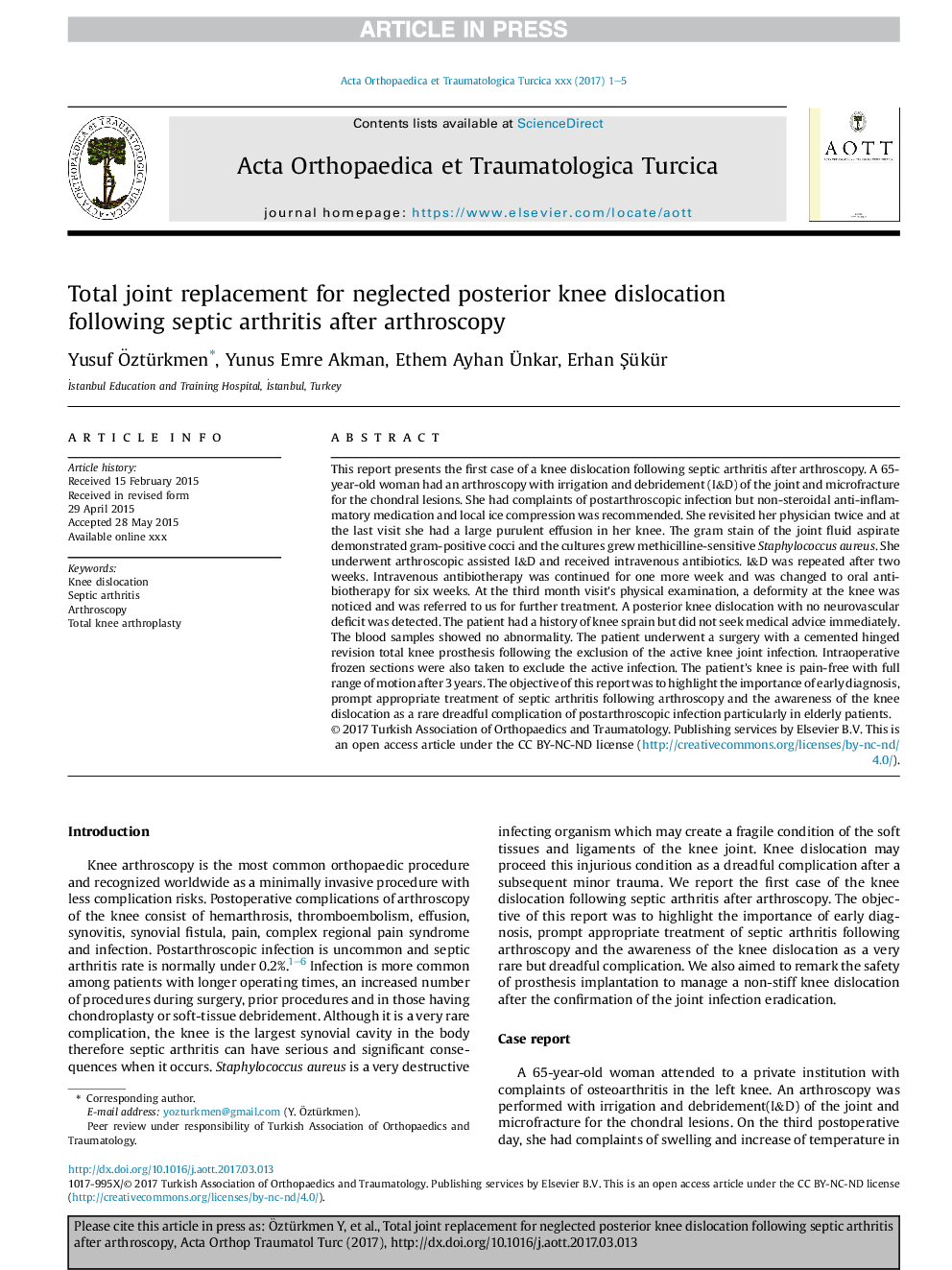| Article ID | Journal | Published Year | Pages | File Type |
|---|---|---|---|---|
| 8795533 | Acta Orthopaedica et Traumatologica Turcica | 2017 | 5 Pages |
Abstract
This report presents the first case of a knee dislocation following septic arthritis after arthroscopy. A 65-year-old woman had an arthroscopy with irrigation and debridement (I&D) of the joint and microfracture for the chondral lesions. She had complaints of postarthroscopic infection but non-steroidal anti-inflammatory medication and local ice compression was recommended. She revisited her physician twice and at the last visit she had a large purulent effusion in her knee. The gram stain of the joint fluid aspirate demonstrated gram-positive cocci and the cultures grew methicilline-sensitive Staphylococcus aureus. She underwent arthroscopic assisted I&D and received intravenous antibiotics. I&D was repeated after two weeks. Intravenous antibiotherapy was continued for one more week and was changed to oral antibiotherapy for six weeks. At the third month visit's physical examination, a deformity at the knee was noticed and was referred to us for further treatment. A posterior knee dislocation with no neurovascular deficit was detected. The patient had a history of knee sprain but did not seek medical advice immediately. The blood samples showed no abnormality. The patient underwent a surgery with a cemented hinged revision total knee prosthesis following the exclusion of the active knee joint infection. Intraoperative frozen sections were also taken to exclude the active infection. The patient's knee is pain-free with full range of motion after 3 years. The objective of this report was to highlight the importance of early diagnosis, prompt appropriate treatment of septic arthritis following arthroscopy and the awareness of the knee dislocation as a rare dreadful complication of postarthroscopic infection particularly in elderly patients.
Related Topics
Health Sciences
Medicine and Dentistry
Orthopedics, Sports Medicine and Rehabilitation
Authors
Yusuf Ãztürkmen, Yunus Emre Akman, Ethem Ayhan Ãnkar, Erhan Åükür,
